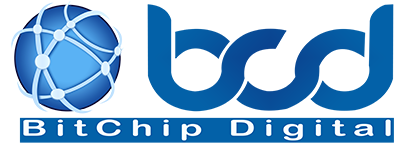
Modern IT environments have evolved rapidly, becoming the backbone of daily operations for organizations across industries. As infrastructure grows more complex with cloud computing, remote access, and a constant flow of data, achieving a balance between efficiency, reliability, and security becomes not just a goal, but a necessity.
Businesses that succeed in maintaining this equilibrium benefit from streamlined workflows, cost savings, and the trust of customers and stakeholders. Even small gaps in one of these areas can expose an organization to downtime, data loss, or breaches. The challenge is to create IT strategies that are adaptable yet robust, performance-driven yet secure.
Understanding the Core Priorities of a Stable IT System
Efficiency, reliability, and security are not separate goals to pursue in isolation, they are deeply interconnected components of a high-functioning IT strategy. Efficiency focuses on optimizing performance and resource use, allowing systems to run faster and teams to accomplish more in less time. Reliability ensures systems are available when needed, with minimal downtime or performance interruptions. Security protects data, systems, and users from malicious threats, breaches, or accidental exposure.
Finding the balance requires consistent monitoring and adjustment. Improving efficiency by automating workflows may inadvertently introduce vulnerabilities if the process lacks proper access controls. Similarly, focusing too heavily on security might slow down system performance if not implemented carefully. That’s why many organizations now adopt integrated platforms and practices to manage these priorities simultaneously.
The Role of IT Observability in Bridging Gaps
Observability refers to the ability to gain insights into a system’s internal operations by collecting and analyzing data, such as logs, metrics, and traces. In dynamic IT environments, this visibility is critical for ensuring quick detection of issues, optimal performance, and proactive threat prevention. Teams can browse solutions for IT observability and security that provide real-time insights and historical analysis across hybrid or multi-cloud setups, helping identify inefficiencies and hidden threats before they escalate. A unified observability framework enhances troubleshooting, accelerates incident response, and supports data-driven decision-making.
Whether an unexpected slowdown hits your application or there’s a configuration drift in your network, observability tools help IT teams pinpoint causes and restore normal operations quickly. Observability aids in compliance audits, providing evidence of system integrity, user activity, and incident resolution timelines. In this way, observability supports both operational excellence and regulatory confidence.
Achieving Efficiency Without Compromising Control
Automation is one of the main drivers of IT efficiency today. From patch management and resource provisioning to user authentication and data backups, many processes can be streamlined with the help of intelligent automation. These tools reduce human error and free up IT staff to focus on higher-level strategic initiatives.
Automation should always be implemented with oversight. Improper configurations or overly permissive rules can lead to vulnerabilities that are difficult to detect until a breach or outage occurs. Efficient systems are those that blend speed with transparency, where every change is traceable, and actions can be reversed if necessary.
Load balancing, virtualization, and infrastructure as code (IaC) help maximize efficiency by dynamically allocating resources where they are needed most. By fine-tuning performance parameters and automating response protocols, teams can prevent bottlenecks, improve user experiences, and maintain service availability even under peak loads.
Reliability Hinges on Proactive Planning and Redundancy
Reliability means your IT systems consistently perform their intended functions. For mission-critical applications, even a few minutes of downtime can have significant financial or reputational consequences. That’s why redundancy and failover planning are crucial components of any reliable infrastructure.
Redundant systems, such as secondary servers, data centers, or internet connections, can take over instantly if a primary component fails. Coupled with real-time monitoring, redundancy reduces downtime and supports business continuity.
Equally important is regular maintenance. IT teams should conduct routine health checks, update software and firmware, and evaluate hardware performance. Scheduled tests of disaster recovery plans ensure that backups are up-to-date and recoverable under real-world conditions.
Embedding Security Throughout the IT Lifecycle
Cybersecurity threats are evolving as rapidly as technology itself. Phishing, ransomware, insider attacks, and zero-day exploits remain a persistent threat. In response, modern organizations must take a layered approach to security, embedding protection at every stage of the IT lifecycle.
This starts with a secure architecture, systems should follow the principle of least privilege, enforce strong authentication methods, and be segmented to limit the blast radius of potential breaches. Regular vulnerability scans, penetration testing, and endpoint detection tools help identify risks early.
Security includes keeping systems current with patches and updates when software vendors release fixes for known vulnerabilities. But beyond the technical safeguards, a culture of security awareness is important. Employees should be trained to recognize phishing attempts, manage passwords securely, and report anomalies without hesitation.
In a world where businesses depend on digital systems more than ever before, balancing efficiency, reliability, and security isn’t optional, it’s foundational. Achieving this balance takes a combination of the right technologies, skilled personnel, and continuous refinement of strategies.
By investing in observability, automation, proactive maintenance, and layered security, organizations can build IT environments that are resilient and adaptive. In doing so, they not only meet current demands but are better positioned for future challenges, ensuring sustained operational excellence.
